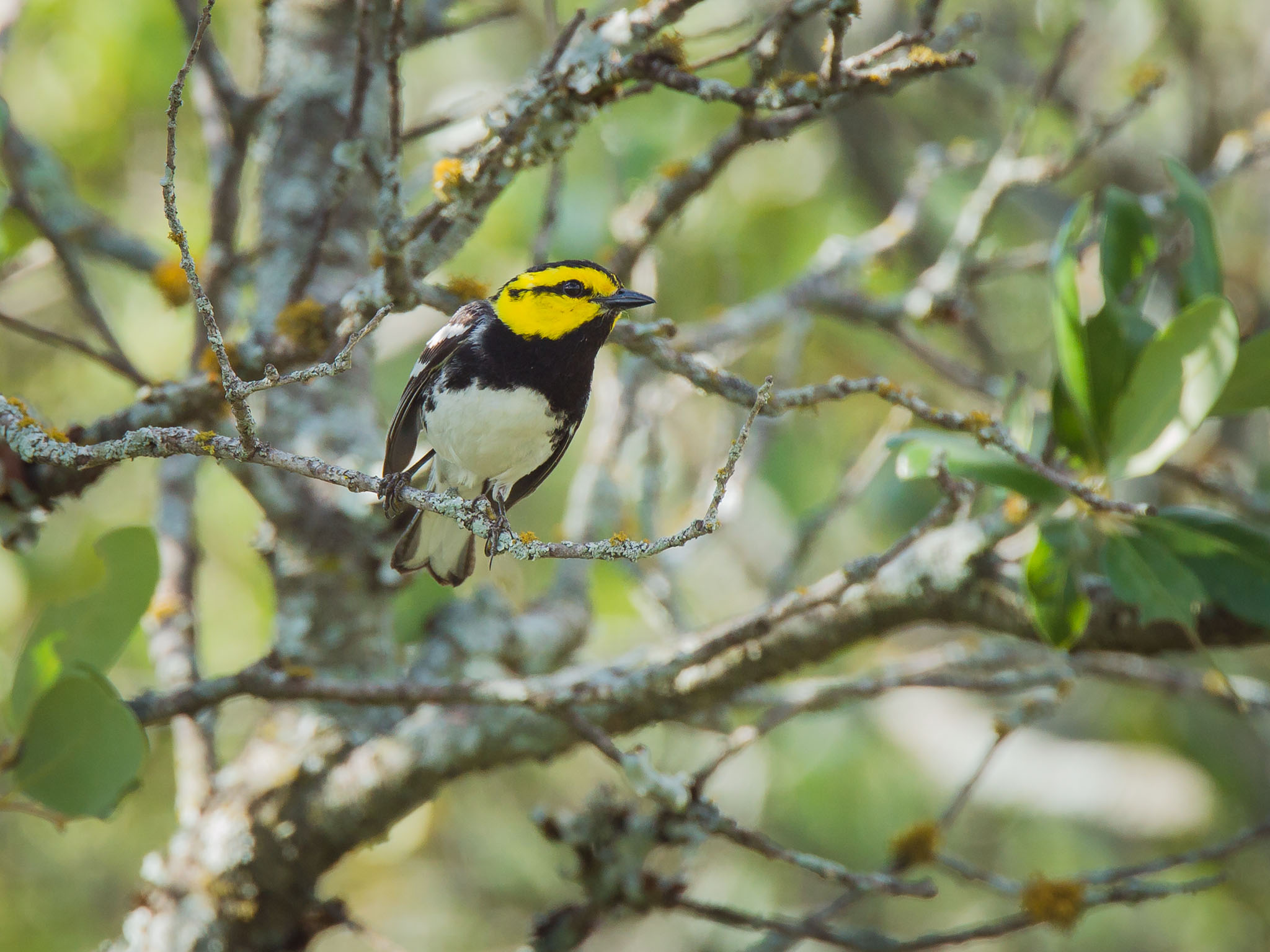
Golden-cheeked Warbler

Government Canyon State Natural Area

Meeting of IBA Volunteer Monitors
A Bexar Audubon Society Project
Funded by Audubon Foundation of Texas
This grant funded additional surveying and monitoring of the Southern Edwards Plateau (SEP) Important Bird Area(IBA).
The golden-cheeked warbler (Setophaga chrysoparia) is an endangered species of bird that breeds in Central Texas, from Palo Pinto County southwestward along the eastern and southern edge of the Edwards Plateau to Kinney County. The golden-cheeked warbler is the only bird species with a breeding range confined to Texas. Golden-cheeked warblers are dependent on Ashe Juniper (blueberry juniper or cedar) for their fine bark stripes for nesting reasons. Nesting habitats are being cleared in the limited breeding grounds for land development, ranching and agriculture.
Beginning in April 2011, Bexar Audubon and Audubon Texas collaborated to employ biologists to perform surveys on sites in northern Bexar County for Golden Cheeked Warblers (GCWA) in Northwest Bexar County. These biologists coordinated access and fieldwork with the land managers and submitted data to the San Antonio Urban Wildlife Program of Texas Parks & Wildlife Department, who then coordinated the analysis and report preparation. These lands have been approved as the Southernmost Edwards Plateau Important Bird Area (SEP-IBA).
New acreage has been added to GCSNA from lands purchased by the City of San Antonio through bond money approved by the voters in San Antonio. These lands are over the sensitive recharge area of the Edwards Aquifer and thus protect the health of San Antonio drinking water.
Surveys funded by this grant focused on the Kallison Ranch (1,162 acres) that previously has had one or two single surveys on a very small portion. It has been noted that there are territories here in marginal habitat that is slated for clearing as part of a savanna restoration project. Solid evidence of nesting (or not) in these areas is needed before that project moves into this area.
Other tracts for survey are a portion of GCSNA proper called Laurel Canyon. This area includes about 800 acres that was last surveyed around 2002, prior to a watershed study in which a long thin swath was cleared as part of the watershed study and for glade restoration. Buffers were left around known territories. BAS needs to see if there has been any changes to this before allowing additional clearing.
Two biologists were hired Spring 2014 to survey the Kallison Tract of Government Canyon State Natural Area for GCW. Over 35 volunteers participated in Citizen Science monitoring of GCW in the SEP IBA area–Maverick Ranch, Eisenhower Park, Friedrich Wilderness Park, and a portion of Government Canyon State Natural Area. Training and protocol sessions were held.
Data is currently still being compiled and a biologist/compiler has been hired to complete the report.
Interpretive signage, newsletter, website, tours, informational tables at events, and other publicity by BAS volunteers have informed the public of the importance of this IBA.